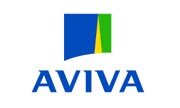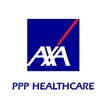Female incontinence refers to the involuntary leakage of urine in women. It is a common and often distressing problem that can affect women of all ages. It can occur due to a variety of reasons, including pregnancy, childbirth, menopause, and certain medical conditions.
Potential Symptoms
The symptoms of female incontinence can vary depending on the type and severity of the condition, but common symptoms include:
Stress Incontinence:
- Leakage of urine during physical activities such as coughing, sneezing, laughing, or exercising.Urge Incontinence:
- A sudden, intense urge to urinate followed by involuntary leakage.
- Frequent urination, often including nocturia (waking up during the night to urinate).
Overflow Incontinence:
- Dribbling of urine due to a bladder that doesn’t completely empty.
- Frequent or constant dribbling of urine.
Functional Incontinence:
- Urinary leakage due to physical or mental impairments that prevent one from reaching the toilet in time.
Mixed Incontinence:
- A combination of stress and urge incontinence symptoms.
Treatment Options
The treatment for female incontinence depends on the type and severity of the condition, and it may involve one or more of the following options:
Lifestyle and Behavioural Changes:
- Bladder training to increase the intervals between urination.
- Pelvic floor exercises to strengthen the muscles that control urination.
- Dietary changes, such as reducing caffeine and alcohol intake.
Medication:
- Anticholinergics to calm an overactive bladder.
- Topical oestrogen to rejuvenate and strengthen vaginal and urethral tissues.
- Mirabegron to relax the bladder muscle and increase its storage capacity.
Medical Devices:
- Urethral inserts or pessaries to support the bladder.
Surgical Options:
- Sling procedures to provide support to the urethra.
- Bladder neck suspension to lift the bladder neck and urethra.
- Artificial urinary sphincter insertion for severe cases.
Other Interventions:
- Injections of bulking agents to help close the bladder neck.
- Nerve stimulators to regulate bladder function.
Treatment Process Involvement
Diagnosis:
- Comprehensive medical history and physical examination.
- Urinalysis to check for infections or other abnormalities.
- Bladder diary to track urination patterns and symptoms.
- Urodynamic tests to assess bladder function.
Initial Management:
- Implementation of lifestyle and behavioural modifications.
- Prescribing medications if necessary.
Follow-Up and Adjustment:
- Regular follow-up appointments to monitor progress.
- Adjusting treatment plans based on effectiveness and side effects.
Advanced Interventions:
- Consider surgical or device-based treatments if conservative methods are ineffective.








